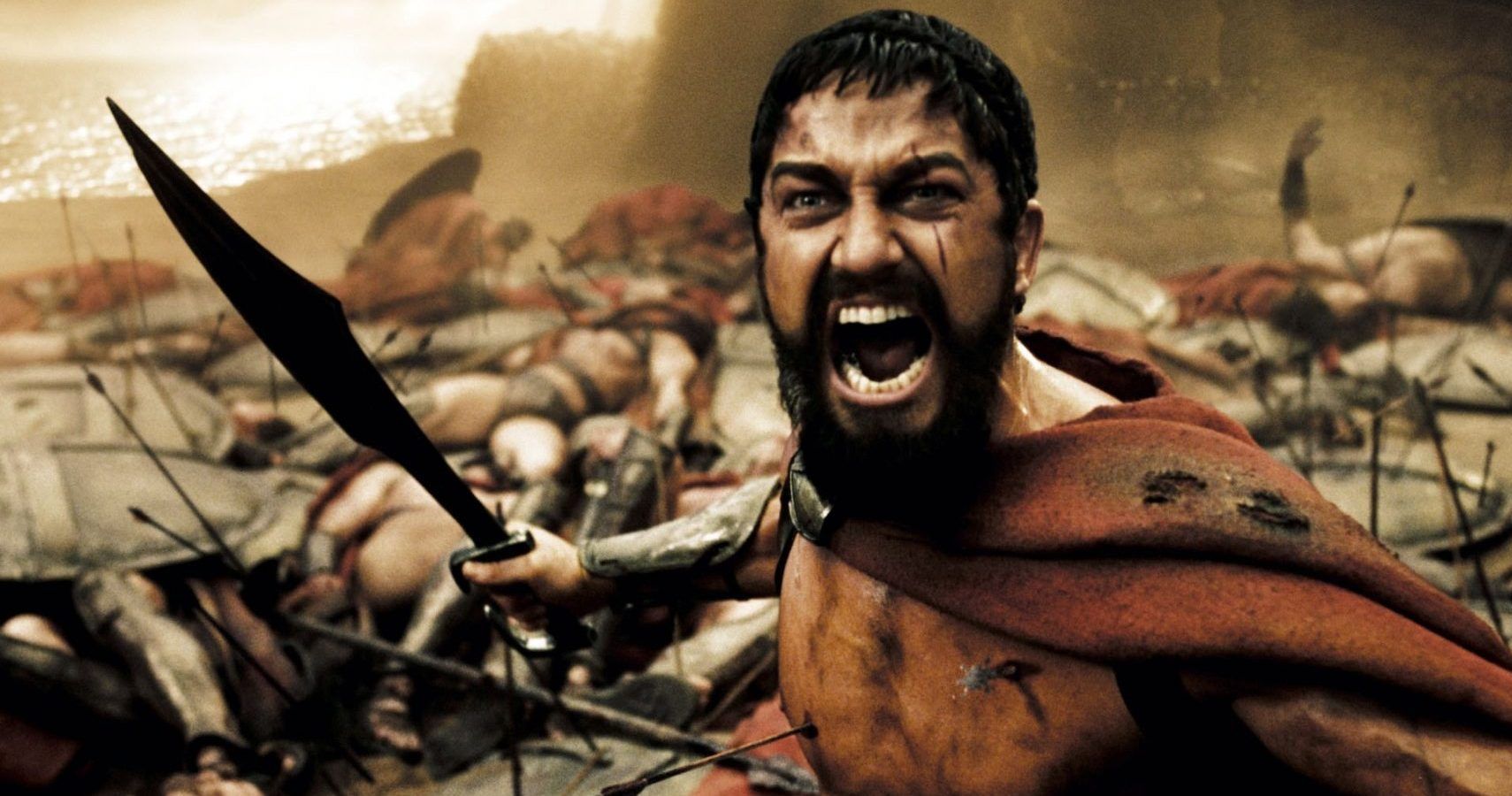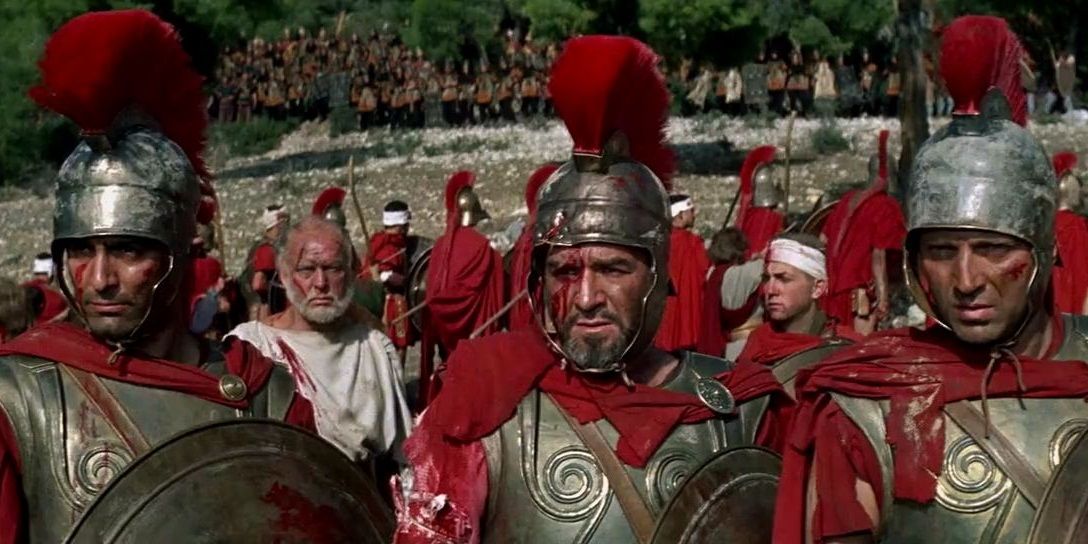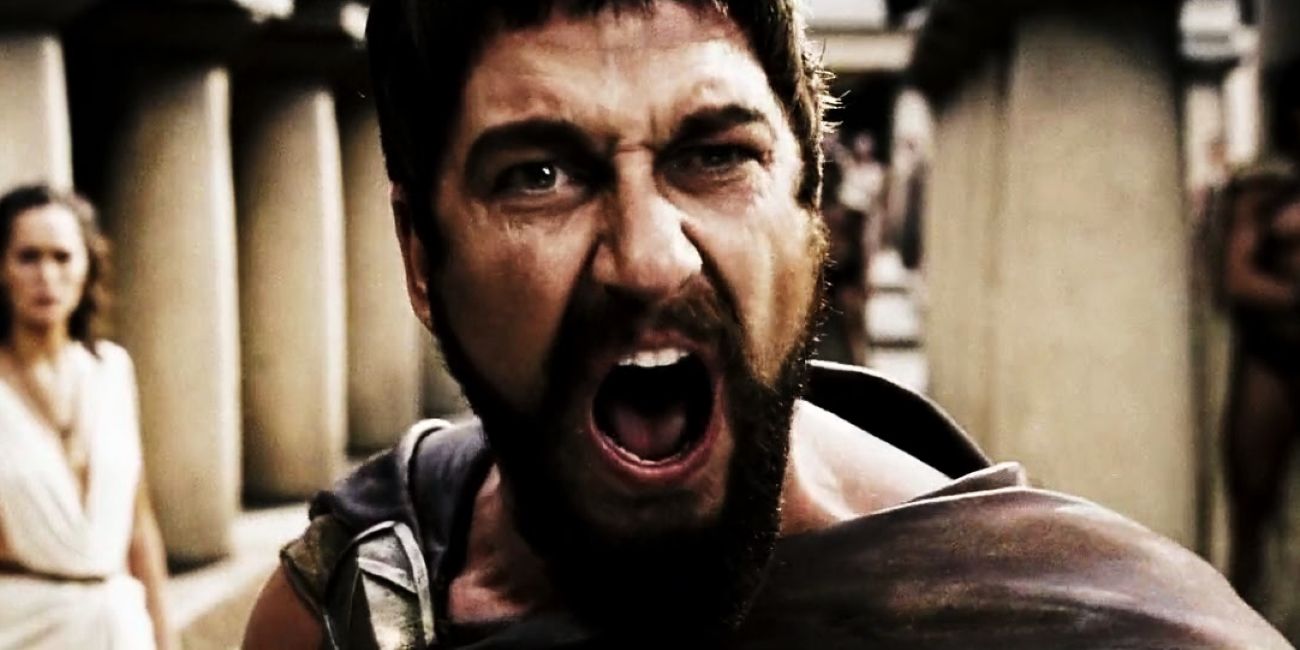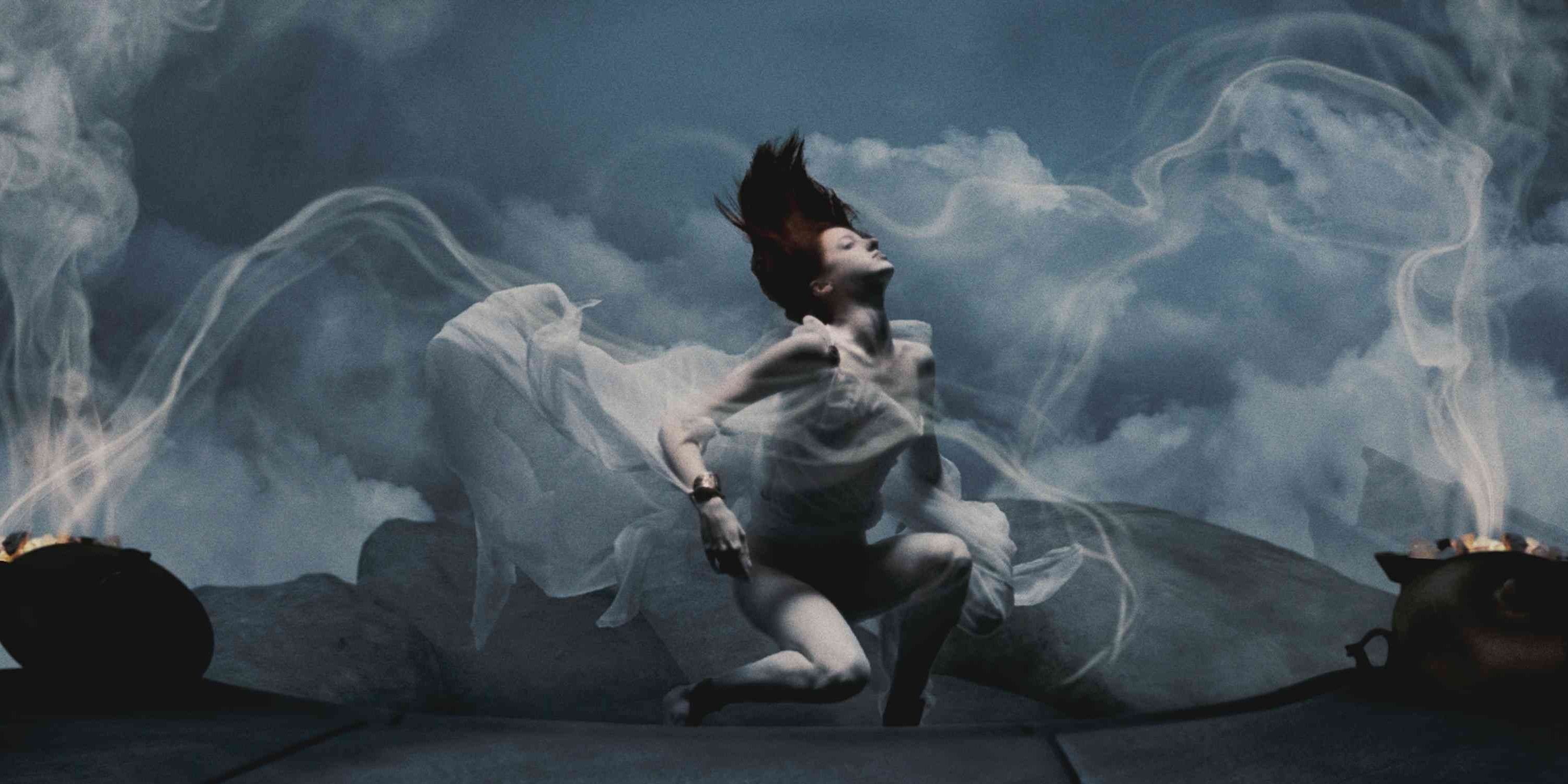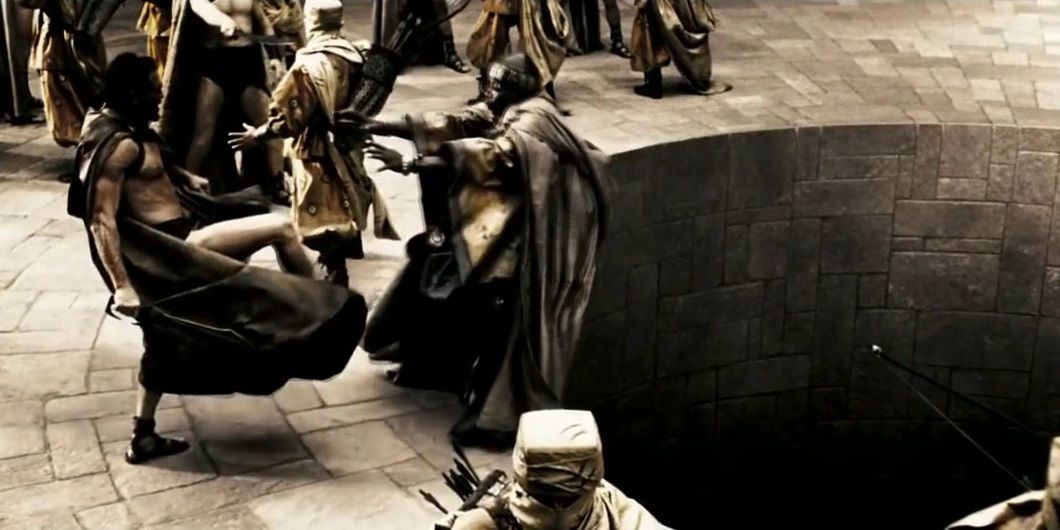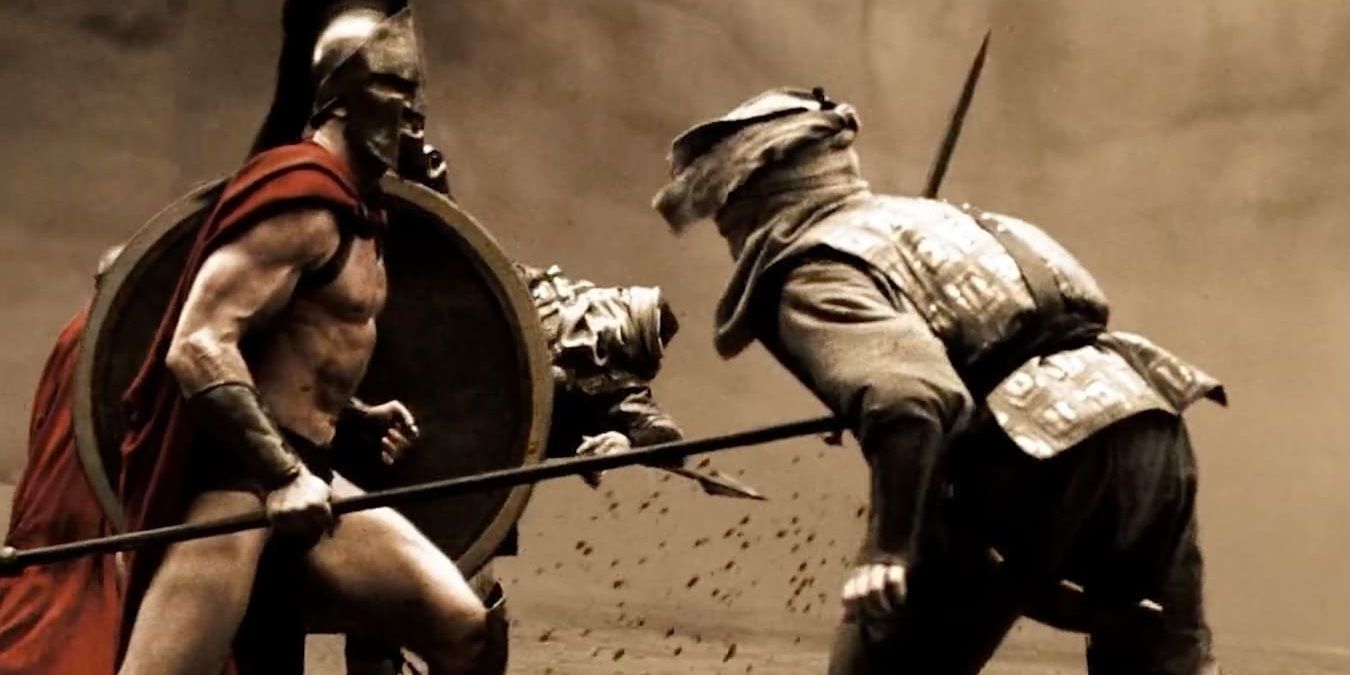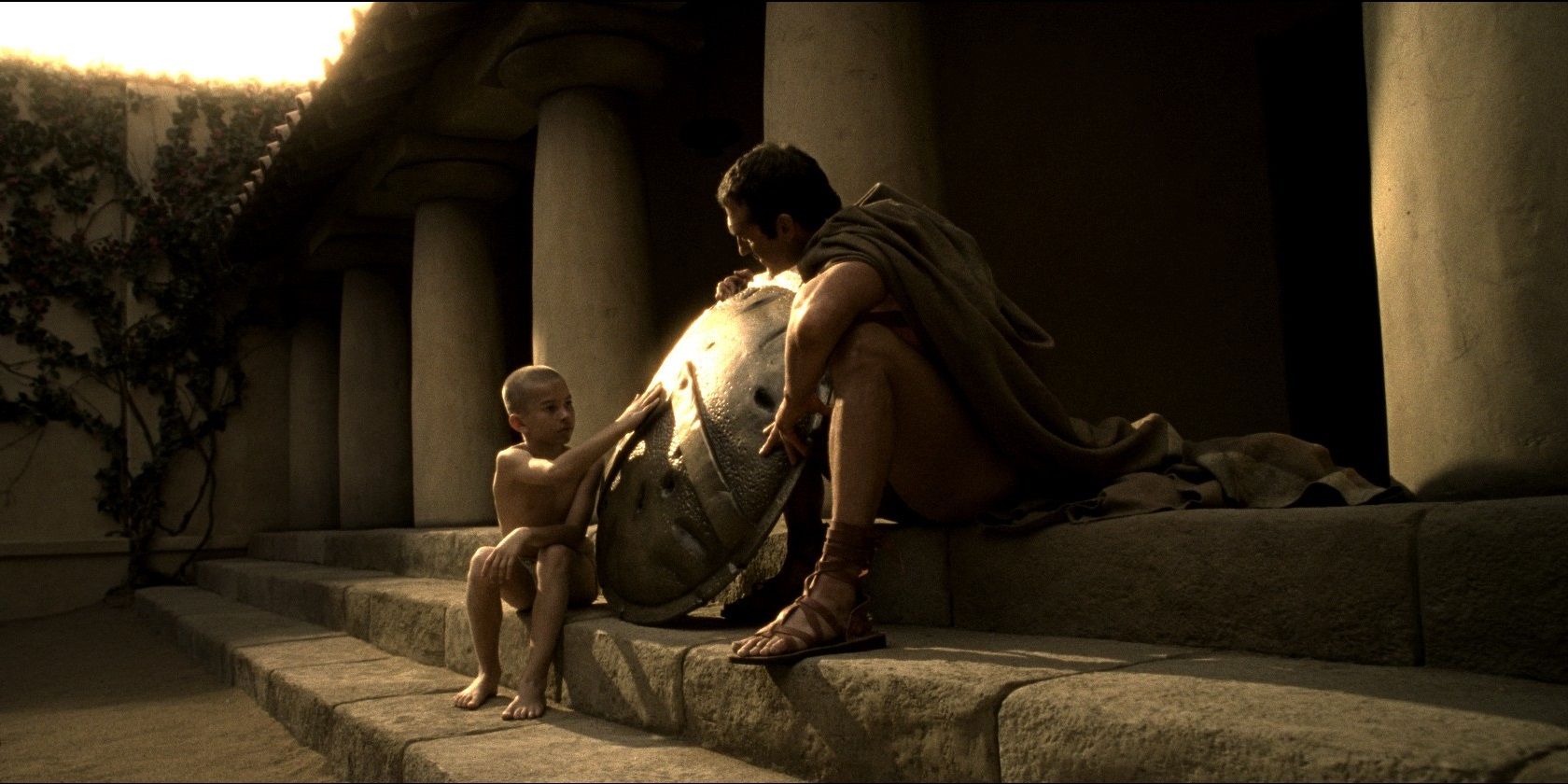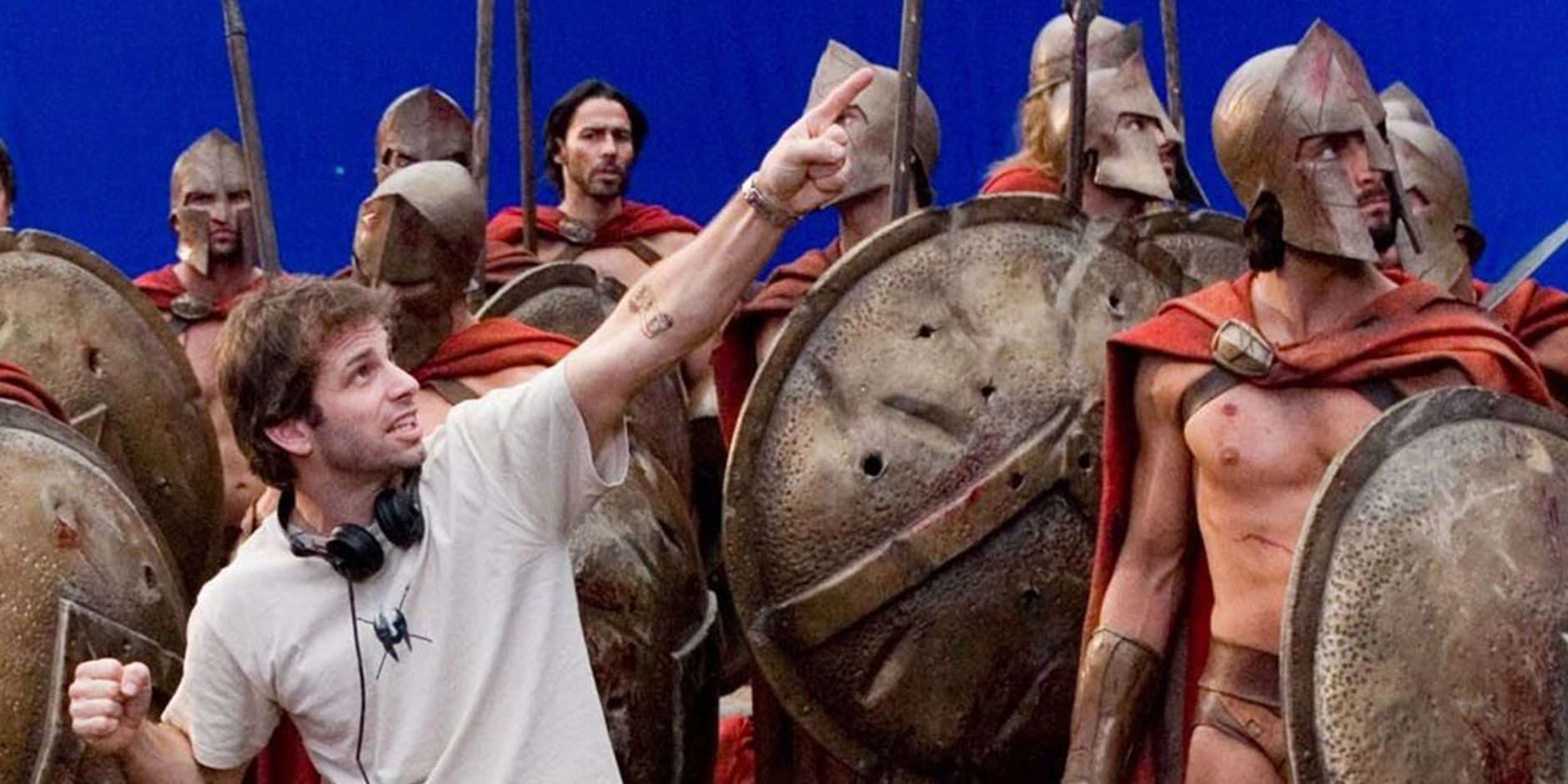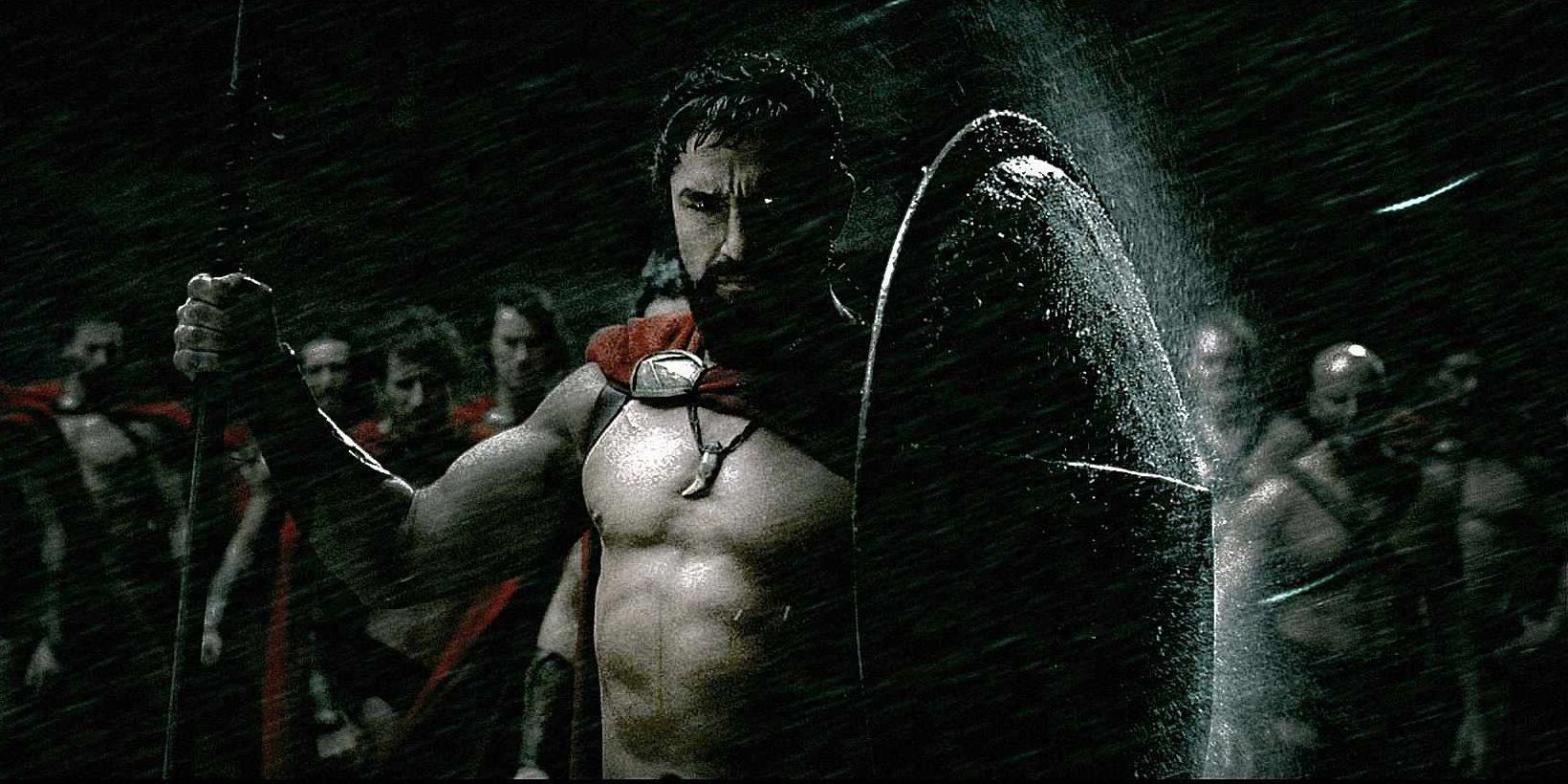Zack Snyder’s 300 is the movie that put him on the map. It established his signature visual style — saturating colors, using comic books as storyboards, and cutting in and out of super slow-motion during action scenes — and put him in good stead to direct Hollywood blockbusters for years to come.
Although the movie is very upfront about the fact that its telling of the Battle of Thermopylae is coming from a wildly unreliable narrator, 300 was so surprisingly successful that a lot of non-history buffs have taken its version of events as gospel. Here are 10 fascinating details from behind the scenes of 300.
Frank Miller Based His Graphic Novel On A Childhood Viewing Of The 300 Spartans
300 is adapted from a graphic novel by Frank Miller. Miller had been fascinated with the Battle of Thermopylae ever since he saw Rudolph Maté’s movie The 300 Spartans when he was six years old.
According to Miller, Richard Egan’s portrayal of King Leonidas changed his perception of the role of a hero. He realized that heroes don’t always succeed, and sometimes they have to sacrifice themselves for the greater good.
The Line “This Is Sparta!” Wasn’t Originally Supposed To Be Yelled
In the original script for 300, the line “This is Sparta!” wasn’t supposed to be yelled. In the comic book, it’s delivered in a stern but calm manner. Gerard Butler tried a few takes in which he delivered the line this way, but it didn’t have much of an impact.
He tried one take in which he yelled the line at the top of his voice. Zack Snyder loved this delivery of the line and asked him to do it again. The second yelled take of “This is Sparta!!!” is the one that ended up in the movie.
The Oracle’s Dialogue Was Just Improvised Gibberish
The dialogue spoken by the Oracle wasn’t scripted. Kelly Craig, the actor playing her, just improvised some gibberish. Zack Snyder was glad that she managed to work the word “Carneia” — the name of one of the great national festivals of Sparta — into the dialogue.
The flowing visual effect that appears in the scene in which the Oracle is dancing was achieved by filming the actor underwater.
Zack Snyder Adapted The Graphic Novel Shot-For-Shot
When he was adapting 300 for the screen, Zack Snyder decided to basically use the graphic novel as a storyboard. Robert Rodriguez had used a similar technique when he was adapting Sin City — another Frank Miller comic — for the big screen.
Snyder photocopied panels from the graphic novel and used them as an endgame, figuring out which shots would come before and after them, which he said was a fun challenge.
Warner Bros. Initially Wanted A PG-13 Rating
Although Frank Miller’s comic is as gory and graphic as the film based on it, Warner Bros. initially wanted their big-screen adaptation of the book to get a PG-13 rating. When Zack Snyder signed on, he wanted to make it R-rated, and Warner Bros. eventually relented.
Studio executives thought that the best-case scenario for 300 would be to match Sin City’s $74 million box office gross, so they were pleasantly surprised when it ended up topping $200 million.
Most Of The Blood Was Added In Post-Production
300 is one of the bloodiest, goriest action movies of the 21st century. However, not an awful lot of fake blood was used during filming. In fact, the whole production only used about two gallons of fake blood. The rest was added digitally during the post-production phase.
In real life, every Spartan soldier wore a plume, but in the movie, only Leonidas has one. This was so the audience could tell him apart from the other Spartans in the battle sequences.
The Actors Underwent A Grueling Training Regime
Since the script required all the male cast members to be ripped and shirtless in basically every scene, the actors were subjected to a grueling training regime for eight weeks before shooting. The regime was put together by Marc Twight, a record-breaking professional mountain climber. The actors never did the same exercise more than once to prevent their bodies from getting accustomed to certain types of exertion.
Gerard Butler called his training for 300 the hardest thing he’s ever had to do. When the regime was over, Twight confessed to pushing the 300 cast harder than he’d pushed anyone before, including himself.
Leonidas’ Father Was Played By Gerard Butler’s Stunt Double
Leonidas’ father bears more than a passing resemblance to him, and that’s because the actor who was hired to play him, Tim Connolly, was also working as Gerard Butler’s stunt double. The younger version of Leonidas, on the other hand, was played by Zack Snyder’s son.
When the real-life Leonidas died, he was 60 years old. Butler was nowhere near the age of 60 when he played him. This is just one of many historical inaccuracies found in 300, a movie that hardly goes out of its way to be realistic.
The Filmmakers Favored Blue Screens Over Green Screens
Out of the 1,523 cuts featured in 300, more than 1,300 of its shots contain some elements of visual effects. All in all, 300 contains a grand total of 8,631 VFX elements. The crew decided to use blue screens a lot more than green screens, utilizing blue screens for 90% of shooting and green screens for just 10%.
This is because blue was better-suited to the lighting choices they’d made in pre-production, and the Spartans’ red capes photographed better against a blue background than a green background.
Zack Snyder Told The Writers To Dial Up The Weirdness
Zack Snyder began work on 300 before he’d begun work on his directorial debut, his 2004 remake of George A. Romero’s Dawn of the Dead. Around the same time that Snyder was developing 300 with Warner Bros., Michael Mann was planning an unrelated film about the Battle of Thermopylae that he ended up having to cancel.
During pre-production, Snyder bonded with Frank Miller over a shared affection for samurai movies and gory low-budget horror cinema. Snyder’s main note to the screenwriters adapting Miller’s graphic novel was to add more weirdness.

